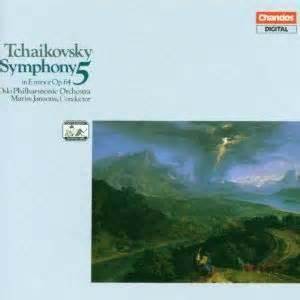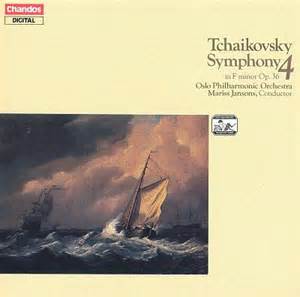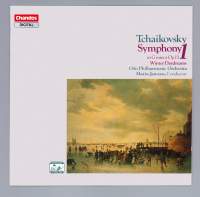A personal reassessment of the Oslo Philharmonic’s Chandos recordings – 1984 -1989

I am in the midst of an assessment of Warner’s release of all of Mariss Jansons’ EMI recordings with the Oslo Philharmonic Orchestra – or should I say – re-release – in a boxed set called Jansons – The Oslo Years. I have published four posts covering the the first eleven discs of the twenty-one discs of the EMI contract. Before I continue on with that, I feel compelled to take a short break and do an assessment – or more specifically – a reassessment of the Chandos recordings that the Oslo Philharmonic undertook between January 1984 and November 1989.
While I was prompted to assess the Warner release as a result of a desire to review and possibly revise my previous opinions of the recordings, especially since these recordings were remastered and released as a sort of legacy box, no such considerations applied to my decision to do a reassessment – re-evaluation would be a better word for it – at all. There was no Chandos Jansons box released and all of those recordings are several decades old. No, I just decided to focus on them as a welcome break before I dove back into blogging about the rest of the Oslo Years. One of the differences here is that Mariss Jansons made most of his recordings for Chandos with the Oslo Philharmonic, but not all. He recorded one Prokofiev with the Leningrad Philharmonic (as the St. Petersburg Philharmonic was known at the time), and Rachmaninov with the Philharmonia Orchestra. And Yoav Talmi recorded the Bruckner Ninth Symphony with the Oslo Philharmonic for Chandos in the midst of the Tchaikovsky cycle.
I will be discussing the Jansons recordings with the Oslo Philharmonic and the Talmi/Bruckner recording in these blog posts and talking about the recordings both as recordings and going “behind the scenes” so to speak.
The whole story began with the appointment of Mariss Jansons as the Oslo Philharmonic Orchestra’s chief conductor, a post which he assumed in 1979. The orchestra had made many recordings in the 1950s and 60s, and had even toured the United States in the 1970s, but by the time Jansons took up his post, the reputation of the orchestra was that of a very good orchestra, but not one of international caliber. Jansons had a plan from early on in his tenure to raise the orchestra’s musical standards through increasing the size of the ensemble – it had seventy-eight musicians when he started with them – when he stepped down in 2002, it had one-hundred eight – and increasing its quality through intense rehearsals, concerts, touring and eventually recordings. His first forays into recording with the Oslo Philharmonic took consisted of a series of recordings of the complete orchestral music of Edvard Grieg. While it received some international acclaim, the distribution network of Norwegian classics was insufficient to the task of bringing the orchestra to the attention of the wider international public. The recording and editing techniques were apparently not up to the job either, so something needed to be done, and done it was. By January of 1984, the size of the orchestra had increased to ninety musicians, and it had already toured the U.K. in 1982. It was decided that the orchestra would make a recording of the Fifth Symphony of Tchaikovsky “free of charge” – which meant that the artists would not be paid for the sessions. Apparently the recording producer – the legendary James Burnett – did it as a “freebie’ as well. The sessions took place in January of 1984, and when the recording was edited, management took it to London and played it to several recording companies. They all said it was very nice, bot there were no takers, except for one up-and-coming company called Chandos Records. They were very impressed with the performance and not only agreed to release the recording, but offered a contract to the orchestra for the complete symphony cycle. That was a feather in the orchestra’s cap so to speak, and the next recording sessions – for the Fourth Symphony – took place in November of 1984.
Symphony No. 5 in E minor, Op.64
I will present and assess each recording as we made it. The Fifth being the first one that we recorded, so let’s make a start. When the recording was released in late 1984, it was received with critical acclaim, so much so that the orchestra members were a little taken aback with all the hubbub. Listening to it when it was released I was extremely impressed with the sound and the performance. On repeated listening, my initial impression was only confirmed. Tempos are well judged – extremely so – and the music just seems to flow. In previous blogs, I have repeatedly decried the acoustics of the Oslo Konserthus. However, with James Burnett in charge of the recording team, it seems that that problem was solved – temporarily at least.
The sound is clean, and balances are well judged. Acoustically, this is the best of the cycle, although each of the other symphonies in the cycle have their merits. The reason for that is that from the Fourth Symphony on, Chandos brought its own recording team in, and it took them a while to get used to the venue.
I am listening to the second movement as I write this post, and am amazed that after nearly thirty-eight years, the sound and performance are as clean as they were when the recording was first made. The horn solo has the dream-like quality necessary to make this a special moment.
This was one of those recordings that was of the highest musical quality from the first note to the last. For years, this was a recommended recording in the Penguin Record Guide. That is saying something.
Even after all these years, this recording gets an A+.

Tchaikovsky: Symphony No. 4 in F minor, Op. 36
In November of 1984, just prior to undertaking our 1984 U.K. tour, the orchestra and Mariss Jansons recorded the Fourth Symphony for Chandos. Note: The symphony was not played on tour – rehearsals were specifically for the recording sessions. James Burnett, who produced the recording of the Fifth was replaced by Chandos’ own recording team of Brian Couzens, the managing director of Chandos who acted as producer, and his son Ralph Couzens, who was the sound engineer. They were very cordial and seemed to know their business. The sessions went very well and the recording was in the can and ready for editing process.
When it was released several months later, I loved the performance, but was surprised at the sound. Too much reverb was used, I felt that some of it sounded a bit “woolly” in my opinion I got used to it on repeated hearing, but some of that impression still remains even now. I wish we were able to have James Burnett produce this one, as he had the measure of the hall’s acoustics, whereas the Couzens were just getting to know the venue. As a performance, this is in many ways one of my favorite, as Jansons lets the music flow, and its dramatic moments (especially in the first movement) are given full reign. Tempos are well judged – and the second movement is well played – kudos to the solo oboe and wind section. The scherzo is well “plucked” – the strings were and are truly amazing, the movement sets one up for the finale. Even at this late date, the finale excites one so much that one is out one’s seat the end. One wants to break out cheering!
It’s that kind of performance, which saves from it the less-than-ideal sound in my opinion. Not that the sound is bad. It’s just not in the same league as the Fifth. I’d give it an A-.

Tchaikovsky: Symphony No. 1 in G minor, Op. 13
The First Symphony was recorded in April of 1985 and was supposed to be coupled with the Capriccio Italien, Op 45. For some reason – probably artistic, while the Capriccio Italien was recorded, and there was an NRK TV recording made for later broadcasting, it was decided that the First Symphony would be released on its own. The recording team of Brian and Ralph Couzens was in charge of recording and the sessions proceeded normally. The orchestra’s playing was very good indeed. Jansons’ interpretation was spot on and his attention to detail – especially in the scherzo – makes for some excellent music making. What stands in the way of this being a first recommendation in my opinion is the sound. The recording team was still getting the measure of the Oslo Konserthus, and while there was much improvement over the Fourth Symphony – more clarity and a bit less reverberation, it could have used a bit more presence, especially in the lower end. The sound is slightly recessed and one needs to have more presence and less distance,especially in the bass in my opinion. The performance is a good one and it is a shame that one has to jiggle with the sound at times. However, in the second movement, they got it just right. It requires a slightly “dreamy” perspective, and the slightly recessed recording is appropriate here. Things improve somewhat in the scherzo and finale. I’d give this recording an A-.

Recent Comments